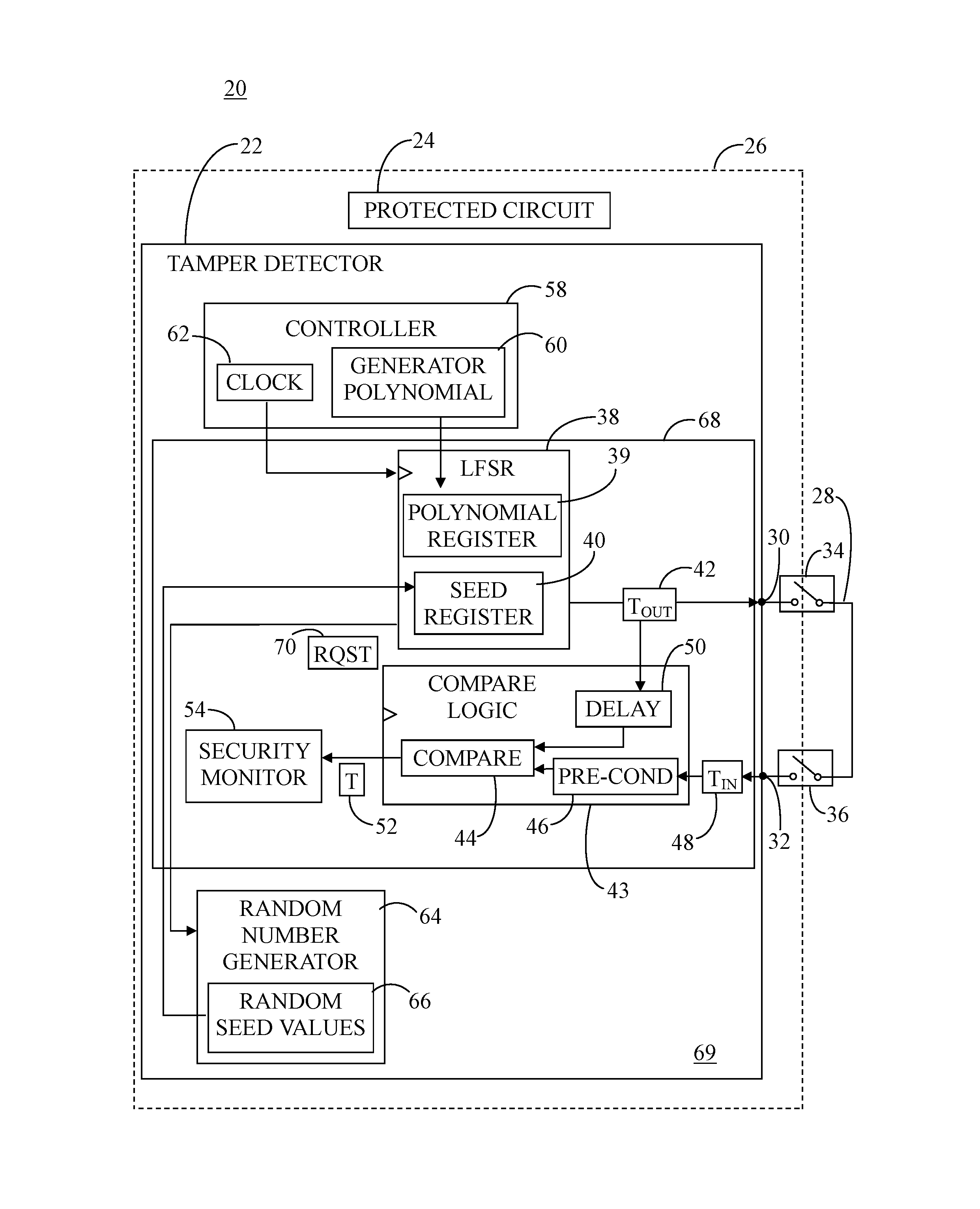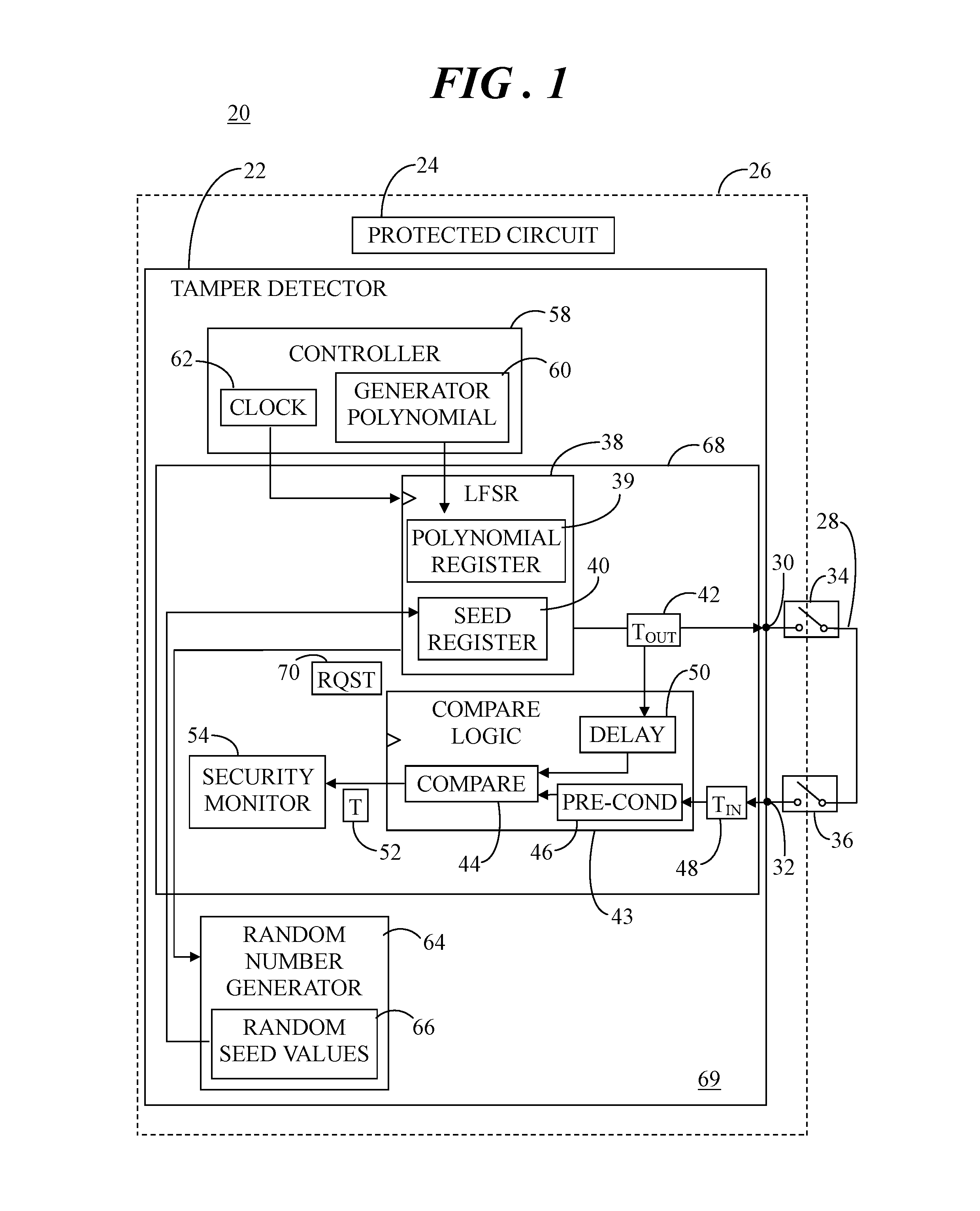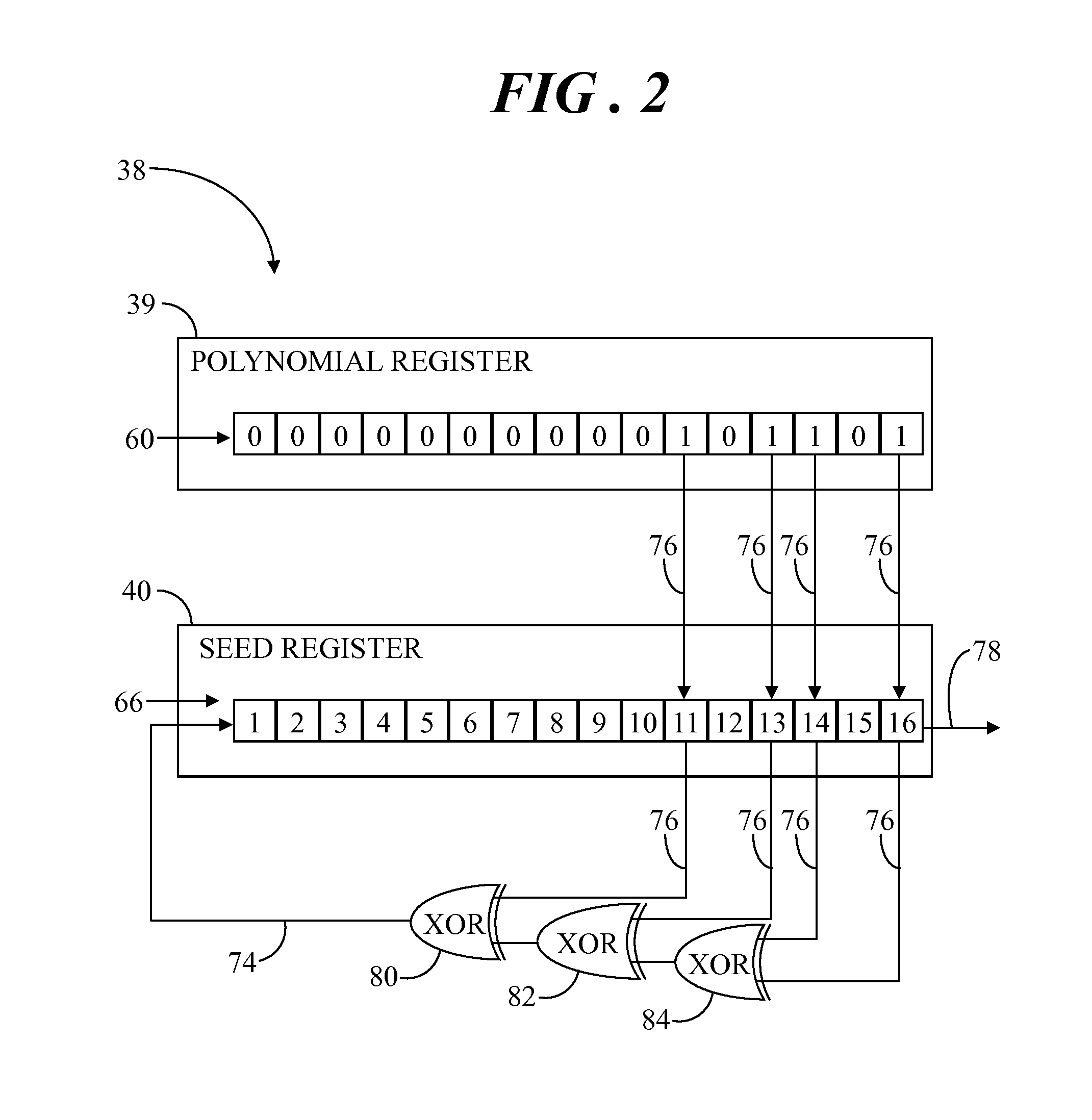Tamper detector with hardware-based random number generator
a hardware-based random number generator and detector technology, applied in the field of electronic circuits, can solve the problems of difficult unauthorized access to protected electronic modules, unlawful or unauthorized access to electronic circuitry or electronic modules, and the difficulty of unauthorized access to protected objects or protected electronic modules
- Summary
- Abstract
- Description
- Claims
- Application Information
AI Technical Summary
Benefits of technology
Problems solved by technology
Method used
Image
Examples
Embodiment Construction
[0008]Some sophisticated attacks on secured physical features of an electronic module may attempt to neutralize the tamper detection capability. To complicate such an attack, a tamper detector may implement a linear feedback shift register (LFSR) which takes a generator polynomial and a random initial seed value and generates a pseudorandom coded signal which can be used as a detection signal in order to detect a tamper event. This pseudorandom coded signal is a deterministic code that can be difficult to predict without knowing or discovering the algorithm used to generate the code and the initial seed.
[0009]Both the generator polynomial and random seed used to generate the pseudorandom coded signal can be loaded into an LFSR seed register via software for use by the LFSR. Accordingly, if a hacker becomes aware of a particular implementation of the LFSR, then the pseudorandom coded detection signal could become predictable by the hacker, thus compromising the security of the electr...
PUM
 Login to View More
Login to View More Abstract
Description
Claims
Application Information
 Login to View More
Login to View More - R&D
- Intellectual Property
- Life Sciences
- Materials
- Tech Scout
- Unparalleled Data Quality
- Higher Quality Content
- 60% Fewer Hallucinations
Browse by: Latest US Patents, China's latest patents, Technical Efficacy Thesaurus, Application Domain, Technology Topic, Popular Technical Reports.
© 2025 PatSnap. All rights reserved.Legal|Privacy policy|Modern Slavery Act Transparency Statement|Sitemap|About US| Contact US: help@patsnap.com



